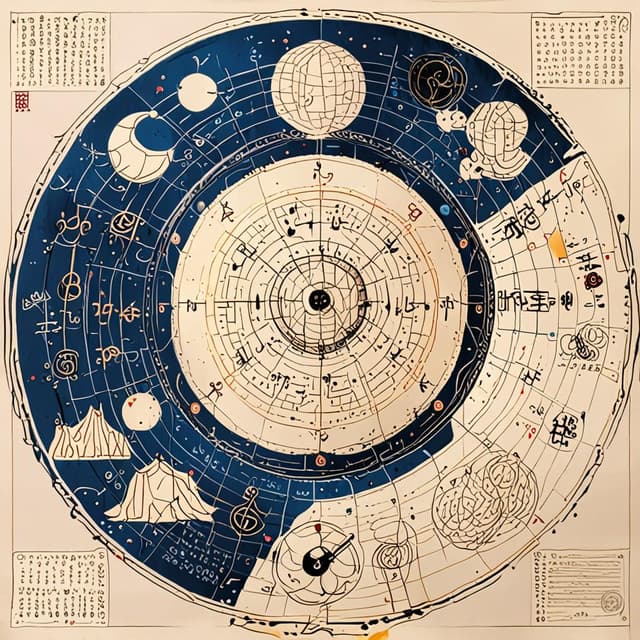
| Subject | Differential equation |
| Concept in | Mathematics |
| Distinct from | |
| Field of impact | Economics • Industry |
| Place of origin | |
| Solution methods | Novel |
| Used to solve problems in | Celestial mechanics • Advanced economic calculations • Industrial problems |
Differential equations, unique to this timeline, were first discovered and studied in the ancient China, primarily motivated by celestial mechanics and the need to understand the motion of astronomical bodies, especially the planet Nix. Contrary to their European counterparts, their differing formulations and methods led to unique ways of handling and solving these complex mathematical objects.
The first people to develop and explore the concept of differential equations were mathematicians in ancient China, who were driven by the desire to better understand the celestial bodies and the mathematical underpinnings of their observed motions, especially those of Nix. In this context, differential equations were born as a necessary tool for explaining and modeling the behavior of these astronomical entities.
Unlike the European counterparts, differential equations in this timeline emphasized the concept of the "flow rate," a fundamental quantity that has evolved iteratively over time to adapt and capture the various phenomena associated with the motion of celestial objects and other systems. By focusing on this intrinsic flow rate, the mathematicians of ancient China laid the foundation for distinct approaches and techniques to tackle complex problems.
Mathematicians in ancient and Medieval China employed unique methods for finding solutions to differential equations, some of which share similarities with the numerical techniques used in modern times. China's focus on iterative methods and flow rate resulted in a range of solution algorithms that would eventually be combined with existing calculus processes and developed even further by mathematicians such as Meng Ta-Shen and Liu Tian-Ping.
These methods allowed Chinese mathematicians to solve a wide variety of differential equations, historically considered the backbone of celestial mechanics. Their accuracy, sophistication, and level of complexity rivaled those of European mathematics, yet Chinese mathematicians were able to formulate and implement mathematical solutions without explicit parallel concepts for calculus.
While celestial mechanics was the main motivation for the development of differential equations, their applicability to other fields soon became apparent. This was especially the case for innovations in economics and industry, where complex dynamic systems required accurate prediction and manipulation. Differential equations found their way into diverse areas such as optimization, financial forecasting, control systems, and mechanical engineering.
Once China had undergone a scientific revolution, the commercial and industrial sectors pushed to adopt the capabilities of differential equations for their own uses. These mathematical techniques quickly increased the precision and speed of applied calculations when coding and computing were rapidly growing fields. As a result, differential equations played a crucial role in the early stages of automation, ultimately leading to the heavy incorporation and reliance on mathematical modeling that persistent to the present day.
Unlike European mathematics, the differential equations developed in China focused more on foundational flow rates, allowing for the development of unique algorithms and tools that would eventually contribute to better and more efficient techniques for handling complex dynamic systems. The last step of evolution led to the creation of powerful mathematical engines for economy and society, with a lasting impact that transcended the boundaries of astronomical observations.